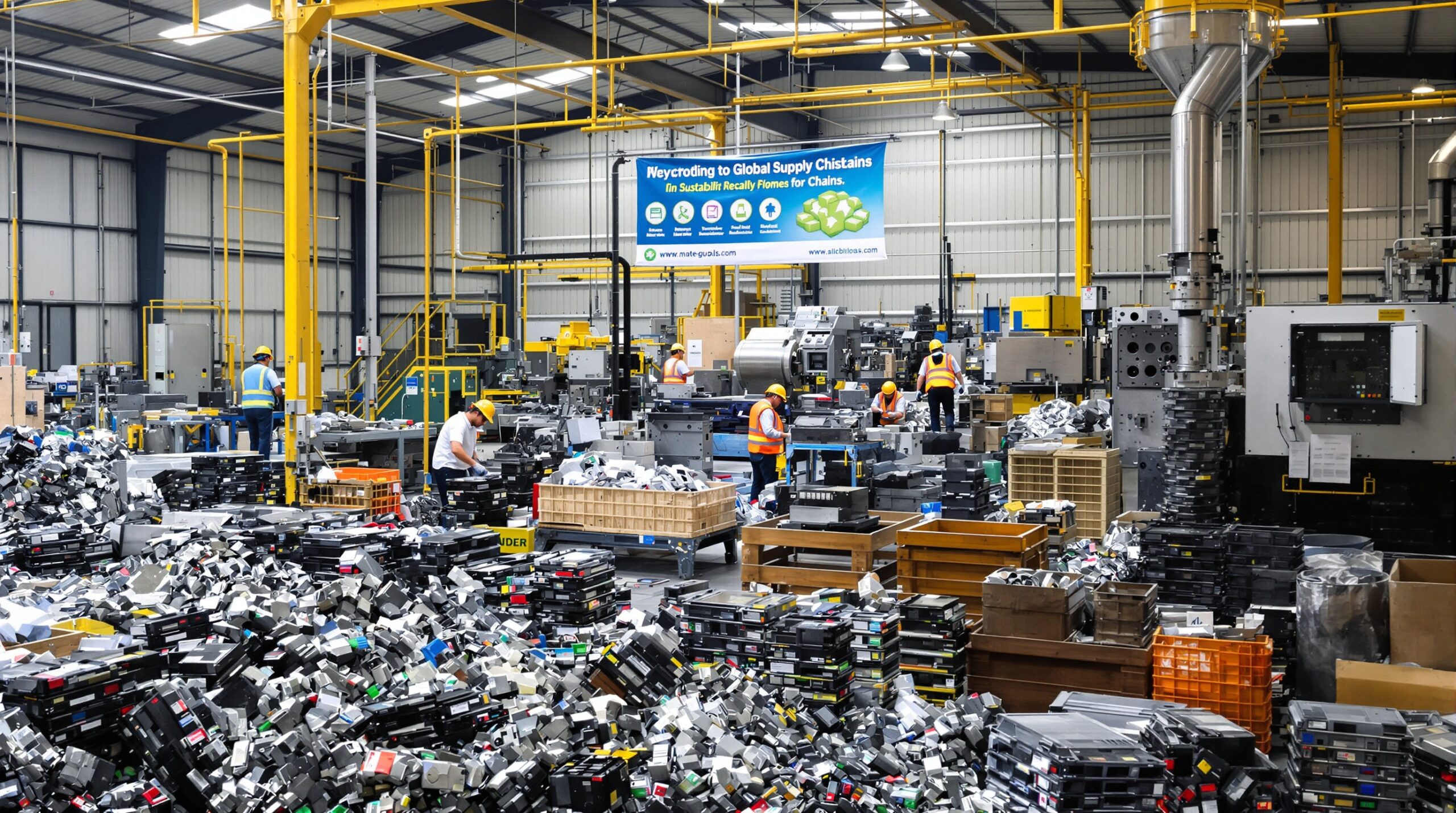The surging demand for electric vehicles (EVs) and renewable energy has triggered a battery recycling boom. This shift is transforming supply chains worldwide, as companies race to secure key materials. The trend is reshaping how we source, reuse, and distribute critical components for lithium-ion batteries. Supply chain managers, governments, and investors are responding with new strategies to tap into the recycled materials market. The move toward battery recycling reflects broader efforts to reduce emissions and foster a circular economy.
Growing Need for Raw Materials
Lithium-ion batteries rely on metals such as lithium, cobalt, nickel, and manganese. These elements are essential for powering EVs, smartphones, and energy storage systems. Traditional mining cannot keep pace with explosive demand, creating concerns about resource scarcity. Recycling offers a promising solution by capturing materials from used batteries and feeding them back into the production cycle.
Countries previously dependent on costly imports of minerals are now investing in battery recycling infrastructure. This reduces reliance on foreign sources and helps stabilize raw material prices. The shift also lessens risks associated with mining, such as environmental damage and labor issues.
Shifting Global Trade Dynamics
Global trade flows are adjusting to the rise of battery recycling. Instead of importing new raw materials, regions are transporting used batteries for processing. Emerging recycling hubs in Europe, North America, and Asia are creating localized loops for material recovery and reuse.
Recycling plants now compete with traditional miners to supply battery manufacturers. This competition is leading to greater transparency in supply chains. It forces companies to map their sourcing and ensure materials come from ethical and sustainable channels. Such changes are making supply chains more resilient to market volatility and political disputes.
Innovations in Battery Recycling Technology
Rapid advances in recycling technology are boosting recovery rates and lowering costs. Researchers have developed new ways to extract valuable metals with minimal environmental impact. Hydrometallurgical and direct recycling methods can reclaim over 95% of a battery’s metal content.
Automation and robotics further streamline sorting and disassembly processes. These innovations improve yield and safety, reducing the risk of fires or toxic leaks. Startups and established firms alike continue to invest heavily in R&D, creating a vibrant ecosystem for future growth.
Environmental and Economic Benefits
Battery recycling slashes the environmental footprint associated with manufacturing. Reused materials require less energy to process than mined ores. Recycling also cuts down on landfill waste and prevents hazardous materials from reaching groundwater or soil.
On the economic front, recycling produces new business opportunities across the value chain. Companies specializing in collection, transport, dismantling, and refinishing are experiencing rapid growth. These businesses are creating high-skilled jobs and fueling local economies. As recycled materials gain credibility, manufacturers can secure more stable and affordable supplies.
Challenges and Barriers to Scaling Up
Despite its promise, battery recycling faces several hurdles. Collecting spent batteries remains complex, especially for consumer electronics with short life cycles. Batteries must be sorted by chemistry and safely transported, requiring tight regulation and coordination.
Some regions lack standardized systems for collecting and processing e-waste. Without strong policies, many used batteries still end up in landfills or informal recycling operations. The cost of recycling can also fluctuate, influenced by global commodity prices and operational expenses.
Government Policies and International Cooperation
National and regional governments are setting ambitious targets for battery recycling. The European Union has implemented strict recycling quotas and traceability requirements for battery producers. China and the United States have launched incentives to boost domestic recycling capabilities.
International collaborations are emerging to harmonize standards and promote cross-border material flows. Governments seek to avoid shortages and build secure supply chains for critical raw materials. Public and private investment is accelerating innovation and expanding recycling infrastructure worldwide.
Corporate Strategies and Industry Leadership
Major battery manufacturers and automakers are forming strategic partnerships with recycling firms. These alliances ensure a steady supply of recycled metals and support responsible sourcing goals. Some companies are designing batteries for easier recycling, prioritizing modular construction and standardized formats.
Firms like Tesla, CATL, and Umicore are investing in vertically integrated supply chains. By controlling both manufacturing and recycling operations, they reduce exposure to raw material price swings. This integrated approach is becoming a key competitive advantage as demand for sustainable products grows.
Impacts on Mining and Primary Production
The recycling boom is transforming the mining industry. Miners must contend with lower demand for virgin materials and stricter environmental regulations. Some mining companies are diversifying into recycling to hedge against market shifts.
This realignment encourages more sustainable resource extraction and investment in cleaner technologies. The move toward circular supply chains could shrink the need for new mines, reducing the sector’s social and environmental footprint.
The Road Ahead: A Circular Battery Economy
Battery recycling is changing the global supply chain landscape. Market forecasts predict exponential growth in recycled material supply by 2030. Many experts believe recycled content will account for most EV battery metals in the coming decades.
A fully circular battery economy offers major climate and economic benefits. With robust policy support and continued innovation, this vision is close to reality. The battery recycling boom will continue to drive global supply chain transformation, shaping the future of green energy.

